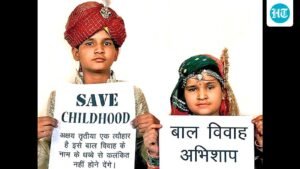
Hope lives in the town where the daughter of an autorickshaw driver grows up playing in the paddy fields of Wayanad, Kerala. At a school for tribal children, a sports teacher senses promise. And so begins S Sajana’s cricket journey, her 150 daily allowance is enough to keep her going. Earlier this year, when she was picked for 15 lakh by Mumbai Indians for the Women’s Premier League, she was able to pay off her family’s debts.

Hope shines through Gwalda village in Haryana’s Mewat district where non-profit Cequin found it impossible to recruit girls to play football in 2012. This year, when the girls’ team won a match, the proud panchayat held a public felicitation. It was, says sequin managing director Lora Prabhu, a “huge paradigm shift”.
Women and girls everywhere are defying stereotypes and fulfilling their potential from sport to the armed forces. “This century belongs to women,” says Kanta Singh, UN Women’s deputy country representative.
Partly this is a result of women realizing their own value as voters wooed by political parties with cash transfers and free bus rides. Partly it’s to do with bridging the gender gap in education. And partly it’s the technology that is bringing the brave new world of possibility. “The girls are learning that they can be anyone,” says Singh.
There is now a virtuous circle of a new generation of girls inspired by an older one that kicked open the door. Deepa Malik won the first women’s para-Olympic medal in 2016; This year, women brought home 11.
There’s a long way to go. Women’s political representation in Parliament remains pathetic and it is scarcely better in the higher judiciary where far too many judgments are weighed down by patriarchy. Gender-based violence remained endemic with one in three women facing violence from a partner.
Women’s rights teetered in Afghanistan where the thuggish Taliban are erasing the presence of women in public spaces and in Palestine, where half of the over 45,000 killed in the Gaza Strip by Israeli Defense Forces are women and children, and in Iraq where it is now legal for nine-year-old girls to marry. In the US, women are told to ignore life-threatening pregnancies or face legal action. In France, a horrific rape trial reminds us the country’s conviction rate for rape is 6%.
But there are too many bright spots to ignore. The election of Claudia Sheinbaum as the first woman head of Mexico stood in contrast to the election of convicted felon Donald Trump. In Denmark, the men’s football team turned down a pay rise so the women’s team now receives equal pay.
There were more than just a few cracks at the glass ceiling: Vice Admiral Arti Sarin was appointed as the first woman director general of the Armed Forces Medical Services; Sujata Saunik, Maharashtra’s first woman chief secretary; and Anish Gawande, the first openly gay man to be appointed national spokesperson for a party, the Nationalist Congress Party (Sharad Pawar).
Looking at the year gone by there is reason to believe the tide has changed. That the girls will save themselves—and us. That there is hope everywhere.
Namita Bhandare writes on gender. The views expressed are personal




